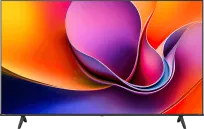
Last week, LG Display officially announced that it would allocate 1.26 trillion won, which is approximately £680 million, for the development and expansion of its next-generation OLED technology. Although the initial statement was rather terse and did not disclose too many specifics, now – thanks to reports from South Korean industry media and analyses from companies such as UBI Research – we are starting to better understand the direction the company is heading and exactly what the funds from this impressive investment will be used for.
RGB OLED not just for televisions. Time for smartphones and laptops
LG Display wants to expand the application of the advanced four-layer display technology Primary RGB Tandem OLED, which has so far been used mainly in premium televisions. Now the company plans to transfer this technology to much smaller devices – smartphones, laptops, and perhaps in the longer term also tablets and wearables.
As reported by Business Korea, a substantial portion of the funds will be directed towards expanding the manufacturing facilities at LG's plant in Paju, South Korea. This is where new production lines are expected to be established, adapted for the production of small and medium OLED panels, based on the same four-layer structure that has so far powered large TV panels.
New technologies LTPO 3.0 and COE. R&D is also getting its slice of the pie
Importantly, the investment does not end with infrastructure. As reported by UBI Research, a significant portion of the funds will support research and development activities. LG Display plans to introduce LTPO 3.0 – a new version of the Low-Temperature Polycrystalline Oxide technology, which is crucial for mobile devices, particularly smartphones. LTPO 3.0 enables smooth, dynamic switching of refresh rates (e.g. from 1 Hz to 120 Hz), which directly translates into energy savings and smoother interface operation.
The second key element of the planned modernisation is the Colour on Encapsulation (COE) technology, which allows for the integration of colour filters directly within the encapsulation layer. In practice, this means that it becomes possible to remove the top polarisation layer, which not only simplifies the construction of the OLED panel but also affects its brightness, energy efficiency, and thickness. COE is a step towards even thinner, more energy-saving displays – without compromising image quality.
New factories in Vietnam and automated production
UBI Research also reports that LG Display is not limited to modernising its Korean factory. The company plans to simultaneously build new production lines in its plants in Vietnam. Investments in this region will not only concern production itself but also the optimisation of assembly processes and the implementation of a higher degree of automation. The aim is to increase efficiency, reduce unit costs, and enable a quicker response to market demand.
Farewell to LCD. LG Display is now only playing in the OLED league
One of the more interesting aspects behind the entire investment is the fact that its financing was made possible by the sale of the last LCD factory belonging to LG Display. This concerns the plant in Guangzhou (Canton) in China, which was sold to TCL CSOT for 2.2 trillion won. This is a symbolic closure of a certain chapter – LG is definitively giving up on further development of LCD technology and is putting everything on OLEDs, especially those in the premium segment.
What does this mean for the market?
For the display industry, this is an important signal. LG Display is not only trying to catch up with Samsung in the category of mobile OLED screens, but also wants to clearly assert its presence in the high-end segment – where quality, durability, and innovation matter. In the longer term, we can expect this technology to appear not only in LG products but also in devices from other manufacturers who use panels supplied by this company (including Apple, Lenovo, and HP).
As a spokesperson for LG Display told UBI Research, this investment is not just about scaling production, but rather a strategic step towards creating highly valuable OLED products that could define the future of mobile screens for the coming years.
 Katarzyna Petru
Katarzyna Petru













